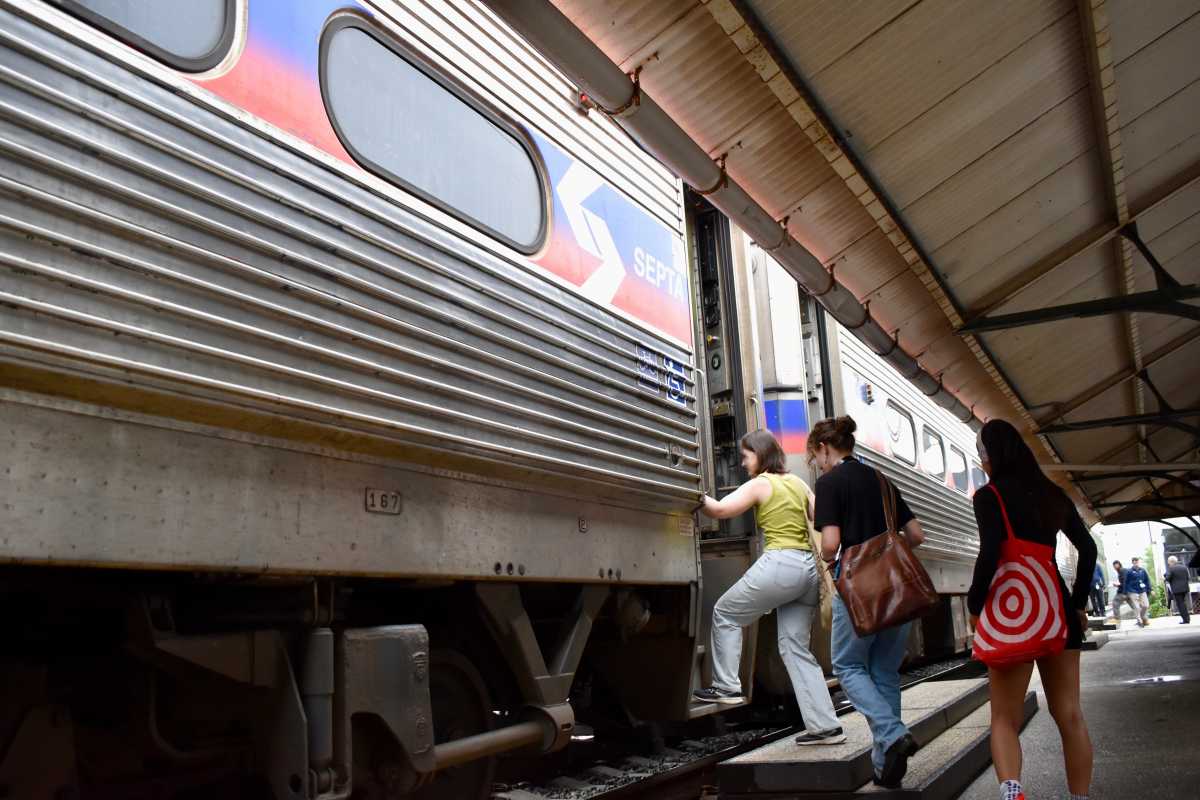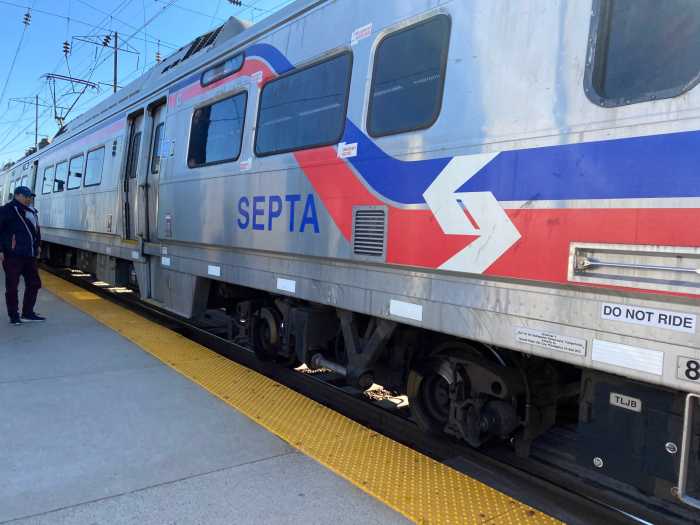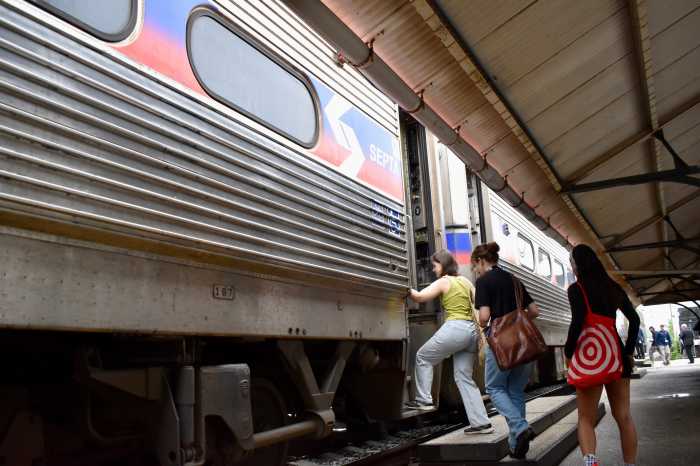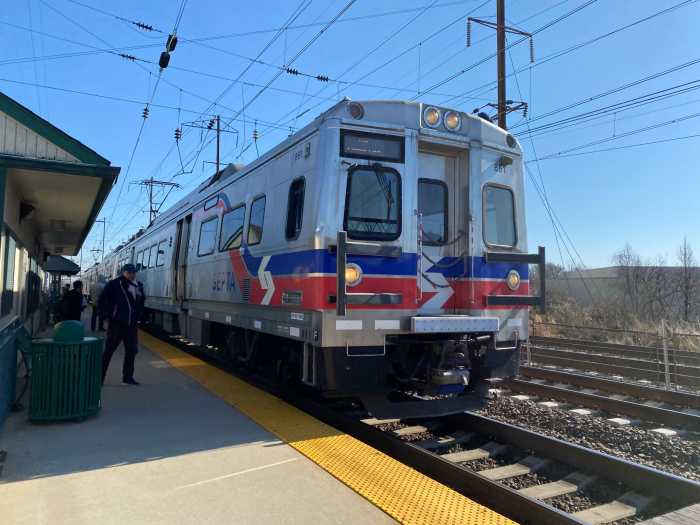SEPTA’s 50-year-old Regional Rail cars remain on the tracks, even after federal safety officials recommended the authority remove the vehicles from its Regional Rail system following a series of recent fires.
The Silverliner IV fleet, composed of about 225 individual train cars, pose “an immediate and unacceptable safety risk,” the National Transportation Safety Board said in a report issued Wednesday.
Two of the five fires cited in the document occurred last week; in one case, a warning light that had been flashing for a day went unreported before flames emerged from a motor in the train, officials said.
NTSB leaders want SEPTA to expedite plans to replace or retrofit the Silverliner IV cars. In the meantime, the trains should be sidelined until the cause of the fires is determined and a plan is developed, the agency added.
SEPTA is not taking the cars out of service, at least for now.
“I am confident, 100% confident we are putting safe cars on the line,” Scott Sauer, the authority’s general manager, said at an Oct. 1 press briefing. “We will not put a car out there that does not pass muster, and I believe that we have a track record of doing just that.”
“SEPTA must take action”
The Federal Railroad Administration, which, unlike the NTSB, can issue binding orders, published an emergency directive Wednesday shortly after the NTSB report outlining steps SEPTA can take to keep the train cars in service.
“At my direction, FRA is taking swift and immediate action to ensure the safety of all passengers and transit workers on SEPTA,” U.S. Transportation Secretary Sean P. Duffy said in a statement. “SEPTA must take action to correct these persistent dangers.”
SEPTA was mandated to “immediately” brief all rail employees about the order, and the FRA instructed the authority to “remove any car from service in case of doubt.”

By the end of the month, the transit system’s leaders must submit a plan explaining the causes of the five fires, according to the FRA directive. Complete inspections must be completed within 30 days. Going forward, operators should be required to report any issues with sluggish acceleration, braking or other vehicle problems within 5 minutes, the document says.
SEPTA posted a message on its website Thursday informing rail riders of the potential for delays, cancellations and crowded conditions because of crews taking part in “safety reinforcement briefings.”
Silverliner IV fleet remains on tracks
Abiding by the NTSB’s guidance to suspend the cars would dramatically hamper Regional Rail service across all lines, as the Silverliner IV cars represent more than 60% of its commuter rail fleet.
“It looks like a Saturday-level schedule every day,” Sauer replied when asked how Regional Rail timetables would be impacted if the cars were pulled off the tracks.
Sauer told reporters that “no root cause” has been established for the fires, describing the matters as individual incidents. The NTSB indicated that it will continue its probe into the issue.
On Wednesday, SEPTA began conducting in-person inspections for all trains passing through Center City stations, Sauer said. Video feeds have been set up to allow managers to remotely monitor the fault indicators, which are akin to check engine lights in cars.
Those steps are on top of 40 mitigation measures the authority has implemented in collaboration with the NTSB and FRA since the initial fire in February, SEPTA officials said.
“We agree with the NTSB. This is an urgent matter,” Sauer remarked. “We want to make sure that these cars are safe. So we have pulled out every stop to try to do that.”
The Silverliner IV cars are being used less, and more thorough checks are being performed, authority representatives said. As Metro previously reported, enhanced inspections have caused delays and cancellations in recent months, particularly in early August.
Nevertheless, the NTSB, in its report, found that “SEPTA’s current operating practices for the Silverliner IV fleet are insufficient to protect passengers and crews because railcars with electrical faults are not being identified and promptly removed from service.”
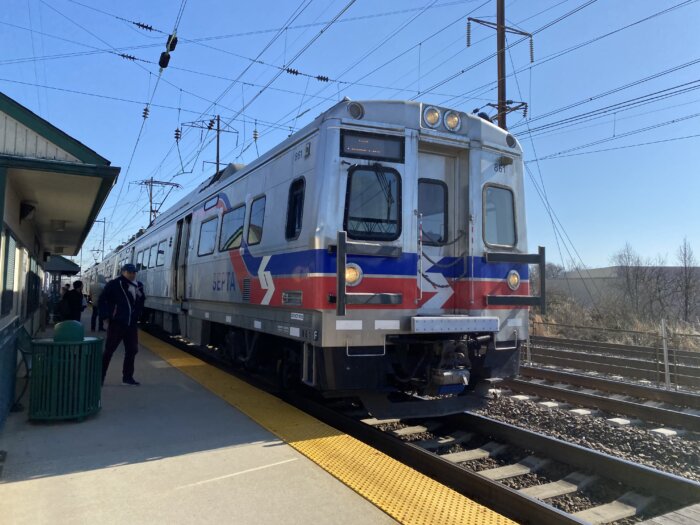
Report highlights persistent risks
The document recaps five fires – Feb. 6 at Crum Lynne Station; June 3 at the Levittown Station; July 22 at Paoli Station; Sept. 23 near Fort Washington Station; and Sept. 25 at Gravers Station. Although no serious injuries were reported, the blazes caused significant physical damage to vehicles in some instances.
In the Gravers fire, on the Chestnut Hill East Line, a railcar remained in service even though a fault light had been activated the previous day and remained on, according to federal officials. An investigation into the reasoning behind that is ongoing, the NTSB said.
The FRA, in its directive, characterized the Sept. 25 fire as “clearly preventable” and asserted that “it points to a potentially larger problem of SEPTA personnel showing disregard for the serious risks posed by the defects” on the Silverliner IV cars.
“It was an unacceptable failure in our process, and we addressed it immediately,” Sauer said.
A SEPTA spokesperson declined to comment on whether any staff have been disciplined or fired over that mishap or the overall handling of the Silverliner IV issues.
NTSB’s report also found that the car involved in the Fort Washington blaze was the same vehicle involved in the June 3 Levittown fire. The FRA, in its order, said an incorrect replacement part was installed after the initial incident.
Both federal agencies noted that the two most recent incidents happened after SEPTA implemented a set of new safety protocols.
Preliminary findings from the Crum Lynne and Paoli fires indicate that the flames spread from exterior electrical components to the interior compartments occupied by passengers, the federal agency said. Newer safety standards adopted near the start of the millennium are designed to prevent such events, according to the NTSB.
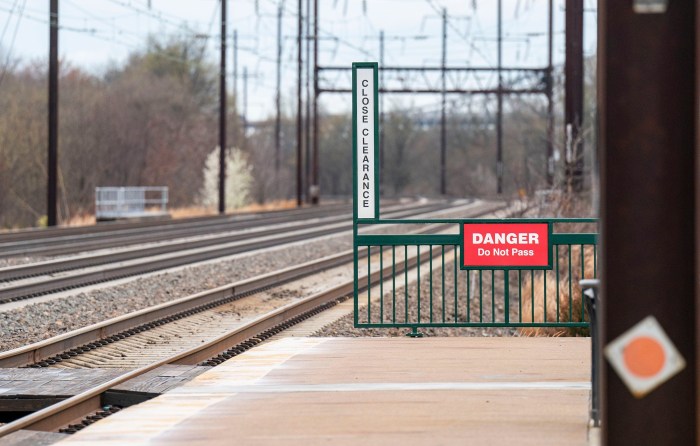
The Silverliner IV cars, which were purchased by one of SEPTA’s predecessors, the Reading Company, between 1974 and 1976, are not equipped with modern feedback systems that alert operators about problems with brakes and electric systems, the report said.
Sauer said replacing the cars would be a six-to-10-year process costing an estimated $2 billion. SEPTA does not have the funding for the purchase and will almost certainly need to take out a loan, he added.
“Our capital funding is just as dire as our operating funding,” Sauer continued.
In early September, following months of state budget negotiations, SEPTA successfully requested permission to use nearly $400 million capital funds over the next two years to keep service running, amid a $213 million budget deficit.
While the move allowed the authority to reinstate dozens of axed bus routes and undo a 20% service cut, it came with no guarantees that the capital dollars will be replenished. Sauer, in a letter to PennDOT at the time, said that SEPTA does “not believe this one-time deferral of capital projects will jeopardize the safety of riders on the system.”
Mayor Cherelle Parker, in a statement, said she expects SEPTA to “do everything possible” to implement the federal recommendations, which she described as “very disturbing to me – and all too predictable.”
“When anyone questioned my concerns and apprehension last month about SEPTA using capital funds for operating costs, this moment is why,” the mayor added.



